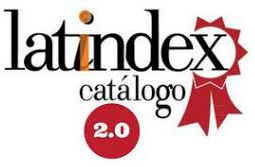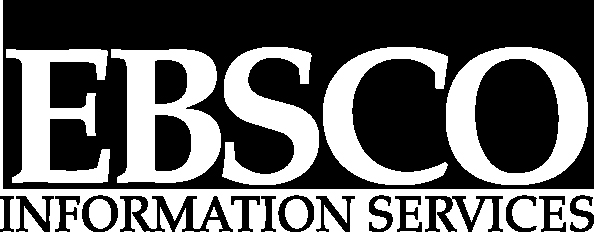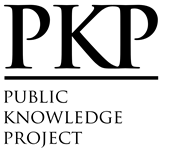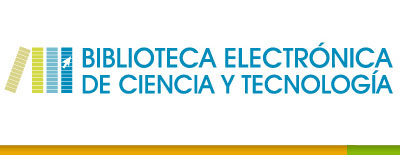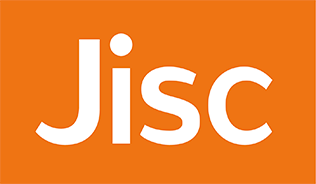E-book consumers’ characteristics and behaviour
The Greek market as case study
Abstract
Technological innovation could play an integral role in the future of content delivery in the publishing industry. New technologies are posing fresh challenges and forcing publishers to rethink their businesses and make novel plans for development, distribution, and marketing. Although there is little threat to the existing book publishing model, since the industry’s core economic model remains essentially the same, there have been changes to marketing and promotion, since the competitive environment is being modified and manufacturing and distribution processes are being enhanced. Publishing industries must adopt these technological advances. Otherwise, in a relentless, demanding, and competitive environment, they will fail. Despite the introduction of online markets, publishers are still concerned about how reading on a screen might replace traditional practices, and they doubt how positively consumers might react to this change. Meanwhile, the empirical research on this issue illustrates e-consumers’ demand for e-books. Through conjoined analysis, it also emphasizes a theoretical discussion on the behaviour of e-consumers/readers and offers practical suggestions for publishers to respond strategically to the new digital environment
Downloads
References
Agarwal, S. & Teas, R. K. (2001). Perceived value: mediating role of perceived risk. Journal of Marketing Theory and Practice, 9 (4), p. 1-14.
Albarran, A. (2010). The transformation of the media and communication industries. Pamplona: Ediciones Universidad de Navarra. (Media markets monographs; 11).
Andrews, L.; Kiel, G.; Drennan, J.; Boyle, M. V. & Weerawardena, J. (2007). Gendered perceptions of experiential value in using web-based retail channels. European Journal of Marketing, 41 (5/6), p. 640-658.
Antioco, M. & Kleijnen, M. (2010). Consumer adoption of technological innovations: Effects of psychological and functional barriers in a lack of content versus a presence of content situation. European Journal of Marketing, 44 (11/12), p. 1700-1724.
Bolton, R. N. & Drew, J. H. (1991). A multistage model of customer’s assessments of service quality and value. Journal of Consumer Research, 36, p. 171-186.
Brown, M.; Pope, N. & Voges, K. (2003). Buying or browsing? An exploration of shopping orientations and online purchase intention. European Journal of Marketing, 37 (11/12), p. 1666-1684.
Brown, S. & Patterson, A. (2000). Imaging marketing: art, aesthetics and the avant- garde. London: Routledge.
Burke, R. R. (1998). Real shopping in a virtual store. In: Bradley, S. P. & Nolan, R. L. (eds.). Sense and respond: capturing the value in the network era. Boston: Harvard Business School.
Bustamante, E. (2004). Cultural industries in the digital age: some provisional conclusions. Media, Culture & Society, 26 (6), p. 803-820.
Chan-Olmsted, S. M. (2004). Introduction: Traditional media and the internet: the search for viable business models. International Journal on Media Management, 6 (1-2), p. 2-3.
Dizard, W. (1985). The coming information age. New York: Longman.
Darley, W. M. & Smith, R. E. (1995). Gender differences in information processing strategies: an empirical test of the selectivity model in advertising response. Journal of Advertising, 24 (1), p. 41-56.
Dennis, C.; Merrilees, B.; Jayawardhena, C. & Wright, L. T. (2007). E-consumer behaviour. European Journal of Marketing, 43 (9-10), p. 1121-1139. Fowler, F. J. (2002). Survey research methods. 3rd ed. Thousand Oaks, CA: Sage.
Grant, R.; Clarke, R. J. & Kyriazis, E. (2013). Modelling real-time online information needs: a new research approach for complex consumer behaviour. Journal of Marketing Management, 29 (7-8), p. 950-972.
Jiang, P. & Rosenbloom, B. (2005). Customer intention to return online: price perception, attribute-level performance, and satisfaction unfolding over time. European Journal of Marketing, 39 (1-2), p. 150-174.
Klerck, D. & Sweeny, J. C. (2007). The effect of knowledge types on consumer perceived-risk and adoption of genetically modified foods. Psychology and Marketing, 24 (2), p. 171-193.
Goode, M. H. & Harris, L. C. (2007). Online behavioural intentions: an empirical investigation of antecedents and moderators. European Journal of Marketing, 41 (5-6), p. 512-536.
Kleijnen, M. H. P. & Andreassen, T. W. (2005). Image congruence and the adoption of service innovations. Journal of Service Research, 7 (4), p. 343-359.
Konstantinova, R. (2010). Online strategies of the Bulgarian economic newspapers. EMMA Conference paper. London.
Korgaonkar P. K. & Wollin, L. D. (1999). A multivariate analysis of web usage. Journal of Advertising Research, 2, p. 10-17.
Lee, L. (2005). Young people and the internet: from theory to practice. Young: Nordic Journal of Youth Research, 13 (4), p. 315-326.
MacInnes, I.; Kongsmak, K. & Heckman, R. (2005). Impediments to digital distribution for software and books. International Journal on Media Management, 7 (1), p. 75-85.
McQuail, D. (2005). Mass communication theory. 5th ed. London: Sage.
Mejtoft, T. (2006). Strategies for successful digital printing. Journal of Media Business Studies, 3 (1) p. 53-74.
National Book Centre of Greece (EKEBI) (1996). The economic and structural characteristics of publishing business in Greece [online]. Retrieved 14 September, 2009, Available in Greek: http://www.ekebi.gr/frontoffice/portal.asp?cpage=node&cnode=423
National Book Centre of Greece (EKEBI) (2009). The book market in Greece. 5th rev. ed. Athenas: EKEBI (in Greeek).
Perrault, W. D. & Frederick, R. (1974). Physical distribution service: a neglected aspect of marketing management. MSU Bussiness Topics 22, p. 37-45.
Porter, M. E. (1980). Competitive strategy: techniques for analyzing industries and competitors. New York: Free Press.
Prabhaker, P. R. (2000). Who owns the online consumer? Journal of Consumer Marketing, 17 (2), p. 158-171.
Robins, K. & Webster, F. (1988). Cybernetic capitalism: information technology, everyday life. In: Mosco, V. & Wasko, J. (eds.). The political economy of information. Madison, WI: University of Wisconsin Press.
Shaver, D. & Shaver, M. (2003). Books and digital technology: a new industry model. Journal of Media Economics, 16 (2), p. 72-86.
Shaver, D. & Shaver, M. (2009). Digital technologies and traditional media: it’s a new playing field. EMMA Conference. Paris, February 2009.
Solomon, M.; Bamossy, G. & Askegaard, S. (2002). Consumer behaviour: a European perspective. Harlow: Person Education.
Sultan, F. & Henrichs, R. B. (2000). Consumer preferences for Internet services over time: initial explorations. Journal of Consumer Marketing 17 (5), p. 386-402.
Teo, T. S. H. & Lim, V. K. G. (2000). Gendered differences in internet usage and task preferences. Behaviour and Information Technology, 29 (4), p. 283-295.
Vettraino-Soulard, M. C. (1998). Les enjeux culturels d’internet. Paris: Hachette.
Zinnbauen, M. (2003). E-newspaper: consumer demands on attributes and features. International Journal on Media Management, 5 (2), p. 127-137.
Ziv, N. D. (2002). New media as catalysts for change in the transformation of the book publishing industry. International Journal on Media Management, 4 (2), p. 66-74.
Copyright (c) 2015 Barbara Symeonidou, George Tsourvakas, Andreas Veglis, Kostas Agas

This work is licensed under a Creative Commons Attribution-NonCommercial 4.0 International License.
The authors retain the copyright and guarantee the journal the right to be the first publication of the work. In case that a translation of the article already published in Austral Comunicación can be published in another journal, it is requested to record the original publication in the translated version.
The license used is CC BY-NC-SA, which allows sharing (copying and redistributing the material in any medium and format) and adapting (remixing, transforming and building on the material) under the following terms: attribution (acknowledge authorship) and non-commercial (the material cannot be used for commercial purposes). Update: February 1, 2022.
Austral Comunicación allows the author (s) to retain the publication rights without restrictions.








